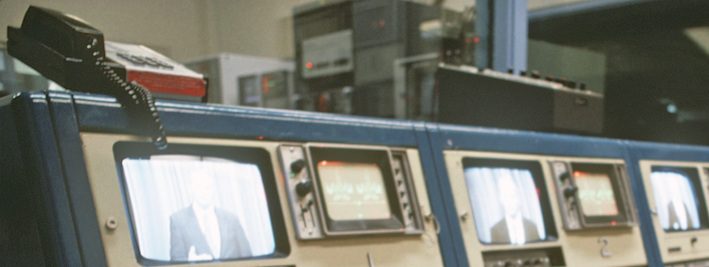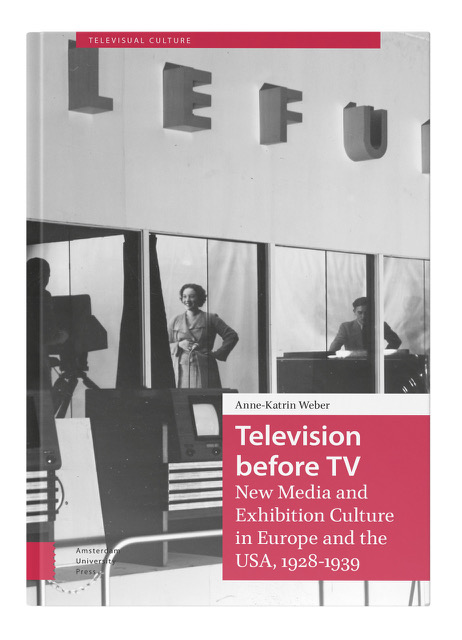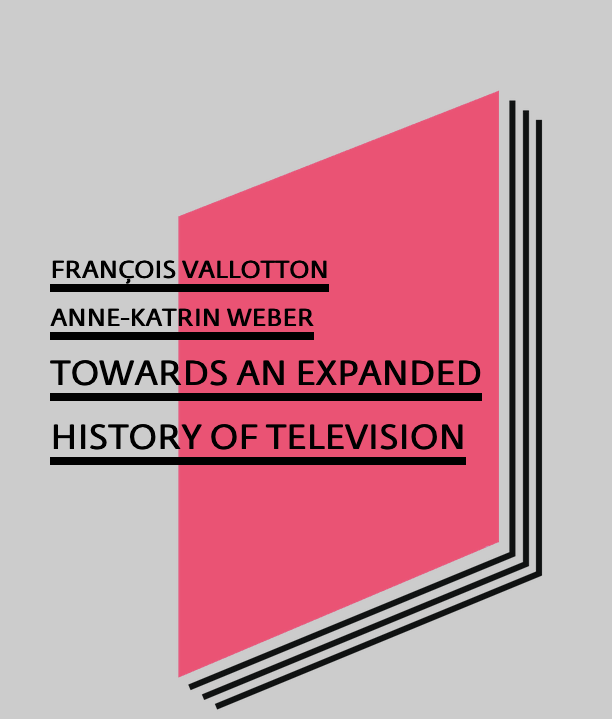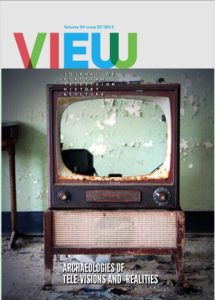Television before TV rethinks the history of interwar television by exploring the medium’s numerous demonstrations organized at national fairs and international exhibitions in the late 1920s and 1930s. Building upon extensive archival research in Britain, Germany, and the United States, I analyse the sites where the new medium met its first audiences. I argue that public displays were central to television’s social construction; for the historian, the exhibitions therefore constitute crucial events to understand not only the medium’s pre-war emergence, but also its subsequent domestication in the post-war years. Designed as a transnational study, my book highlights the multiple circulations of artefacts and ideas across borders of democratic and totalitarian regimes alike. Richly illustrated with 100 photographs, I emphasize that even without regular programmes, interwar television was widely seen.
This Living Book has several objectives. First, it aims to show the generativity of research on an object, television, still in search of academic and institutional legitimacy. Secondly, it intends to promote and extend a historiographic renewal that has been observable for the last fifteen years: in this sense, our ambition is to lay the foundations for an expanded history of television at the intersection of media archaeology, intermedial perspectives, and a comprehensive analysis of vision and remote communication.
This approach is the fruit of « Beyond Public Broadcasting. Towards an Expanded History of Television in Switzerland” (Au-delà du service public. Pour une histoire élargie de la télévision en Suisse). Financed by the Swiss National Science Foundation and co-directed by the two authors, François Vallotton and Anne-Katrin Weber of the University of Lausanne, the project has nourished three doctoral theses and a website, which notably won the 2020 Memoriav Prize. The present anthology also allows us to return to the historiographic and theoretical context that served as a backdrop for our communal reflection; a long introductory article offers a critical assessment of television studies in Switzerland. As for the anthology proper, it is intended to be a vade mecum that we hope will be valuable for anyone working or teaching in the field of media history.
Numéro de revue « La guerre des drones », A Contrario, no 29, 2019.
Ce volume met en évidence les dimensions multiples du drone à travers une analyse critique de ses enjeux géopolitiques, médiatiques, psychologiques, juridiques et historiques. Il décortique le fonctionnement de la violence propre à l’usage des drones dans les conflits contemporains et porte une attention particulière à la prolifération du drone en-dehors des espaces proprement militaires.
La première partie réunit les contributions qui analysent le drone armé, en particulier américain. Le numéro rassemble ensuite des contributions qui se penchent sur les drones civils ou policiers, sur les utilisations du drone dans le continent africain ou durant la Seconde Guerre mondiale ou encore sur l’imaginaire des drones dans la culture populaire.
Intervenant dans un champ largement dominé par des travaux anglo-saxons, ce numéro de la revue A Contrario offre ainsi un panorama en français des recherches sur le drone, en accueillant des approches interdisciplinaires qui contribuent à étendre notre compréhension d’un objet protéiforme.
Numéro de revue édité avec Andreas Fickers, «Archaeologies of Tele-Visions and –Realities,» VIEW Journal of European Television History and Culture 4, no.7 , 2015.
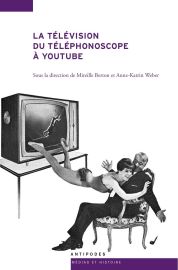
Ouvrage édité avec Mireille Berton, La télévision du téléphonoscope à YouTube: pour une archéologie de l’audiovision, Lausanne: Antipodes, 2009.
Si la télévision a souvent été étudiée dans son contenu ou en tant que médium de masse, elle a plus rarement été l’objet d’une histoire de ses dispositifs compris en tant qu’agencements entre une représentation, un appareillage et un (télé)spectateur.
Cet ouvrage propose de parcourir l’histoire de certains dispositifs télévisuels fonctionnant sur le principe générique d’une transmission à distance de données, d’images et/ou de sons. Les études rassemblées dans ce volume s’intéressent autant aux machines fictives du XIXe siècle, qu’au dispositif « standard » de l’appareil électronique à usage privé, en passant par les nombreuses variantes utopiques et actualisées. La télévision est donc déclinée autant à travers ses réceptions critiques et ses fantasmatiques que via les technologies qui la mettent en jeu, à savoir du Téléphonoscope à YouTube.
Participant à une archéologie de l’audiovision, ce livre prend en considération un ensemble aussi large que possible de dispositifs télévisuels dont la télévision ou le cinéma ne seraient qu’une des manifestations possibles, ni plus, ni moins emblématiques de cette audiovision.
Articles de revue et chapitres de livre
« Ephemeral Studios: Exhibiting Televisual Spaces during the Interwar Years » in The Studio: Space, Form, Materiality, éd. Brian R. Jacobson, University of California Press, 2020, 63-82.
Weber, Anne-Katrin, Roxane Gray and Marie Sandoz. “ITU Exhibitions in Switzerland: Displaying the ‘Big Family of Telecommunications’, 1960s – 1970s.” In History of the International Telecommunication Union (ITU). Transnational Techno-Diplomacy from the Telegraph to the Internet, Gabriele Balbi, Andreas Fickers (ed.) (Berlin: De Gruyter), 265–296.
« Le dispositif du drone ». A contrario 29, no 2 (2019): 3‑24.
« Des pellicules et des signaux : convergence médiatique et télévision de l’ entre-deux-guerres », in Formes et plateformes de la télévision, éd. Marta Boni, Presses universitaires de Rennes, 2020.
Fickers, Andreas, Dana Mustata, and Anne-Katrin Weber. “The Rise of Television: Institutionalization and the Forming of National Audiences.” In Handbook of European Communication History, Klaus Arnold, Susanne Kinnebrock, Paschal Preston (ed.) (Hoboken NJ: Wiley), 239-255.
“Du laboratoire à l’écran. La télévision au cinéma dans les années 1930.” In Loin des yeux… le cinéma. Imaginaires visuels des technologies des télécommunications, Alain Boillat, Laurent Guido (ed.), Lausanne: L’Age d’homme, 2019, 323-348.
avec Sylvain Portmann,« Qu’en est-il des (web-)séries suisses? Point sur la situation lors des Journées de Soleure 2016, » Décadrages. Cinéma, à travers champs, no. 32-33, (2016): 168-180.
« Fernseh-Schauen. Öffentliche Präsentationen einer neuen Technologie in London, Berlin und New York, 1928 – 1939, » Rundfunk und Geschichte 37, no. 1-2 (2011): 43-45.
avec Mireille Berton, « Télé-Visions: une introduction à l’histoire des dispositifs télévisuels, » in La télévision du téléphonoscope à YouTube: pour une archéologie de l’audiovision, éd. Mireille Berton and Anne-Katrin Weber (Lausanne: Antipodes, 2009), 13–32.
« La télévision projetée. L’Eidophor à l’Ecole Polytechnique fédérale zurichoise (1939-1948) » in La télévision du téléphonoscope à YouTube: pour une archéologie de l’audiovision, éd. Mireille Berton and Anne-Katrin Weber (Lausanne: Antipodes, 2009), 141-160.
Traduction
Alain Boillat,« René Clair als Widerstandskämpfer gegen die synchron gesprochene Stimme. Was die Sprechmaschinen von A nous la liberté zu sagen haben, » in Resonanz-Räume. Die Stimme und die Medien. éd. Oksana Bulgakowa (Bertz+Fischer, Berlin, 2012), 21-40.
Compte rendu
de « Teletext in Europe: From the Analog to the Digital Era, » Historical Journal of Film, Radio and Television 36, no. 4 (2016): 723–26.
